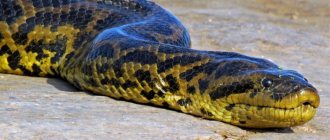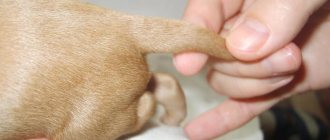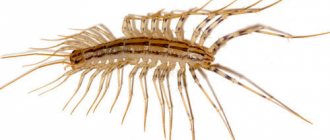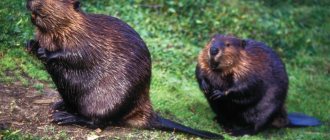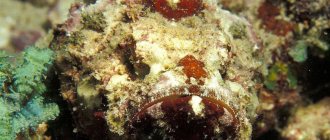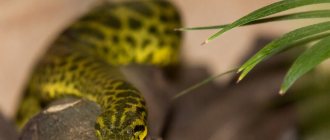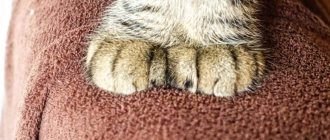- home
- Other animals
- Can Anaconda swallow a Man and why would it do it?
The anaconda is a giant species of snake whose habitat is primarily South America. This creature is capable of terrifying not only animals, but also people, because the reptile is capable of attacking and devouring fairly large mammals. This is why locals and tourists are especially concerned about whether an anaconda is capable of swallowing a person.
The true size of the snake is still debated, because this species is the least studied among reptiles. Some experts and scientists prove that they saw huge representatives of the species, whose body length reached 8, 10 and even 15 meters. However, more experienced specialists who have worked a lot with anacondas argue that by definition a snake cannot reach such sizes. According to official data, the average body length of an adult varies from 5 to 6 meters, with a weight of 90-100 kg, while females are much more massive than males.
Tragic encounters between man and anaconda
By its nature, the anaconda is designed in such a way that it has no need to attack people, because its environment is designed in such a way that there is plenty of other prey around. However, at least one case of human hunting has been recorded in history.
A tragic story happened to a 13-year-old child who, with other children, was picking mangoes in the garden. The reptile quickly wrapped itself around the boy's body, squeezing his arms and legs, while the child himself could not make a sound out of fear. The other children were also terribly scared and could not move. The snake swallowed the child, who had been unconscious or dead for three hours.
After the incident, snake experts and the police managed to find the snake, which was drinking in the pond. Her body was opened, but the boy could not be saved; according to official data, such a case was the first in history. It is believed that the snake was too hungry after hibernation, which provoked the brutal attack.
What to do if you are eaten by an anaconda
This situation can happen to you even at a time when you do not expect it. An anaconda can escape from a zoo . Perhaps one of your neighbors has such an unusual pet at home. At one point, she ate her owner, and then decided to take a walk in search of more. And now she is already on your way. What to do?
To begin, we present an excerpt from a manual for Peace Corps members working in the Amazon jungle. This instruction has been floating around the Internet for a long time. So…
What to do if you are attacked by an anaconda
- If you are attacked by an anaconda , do not run. She still moves faster. Don't panic under any circumstances!
- Lie on your back. Squeeze your legs tightly and press your arms to your body.
- Tuck your chin to your chest.
- The snake will start crawling on you.
- Do not panic.
- After the snake has studied you, it will begin to swallow your legs - the anaconda always starts with the legs. Let her swallow your feet and ankles. Don't panic under any circumstances!
- The snake will then begin to swallow you further. This will take a long time, and you will have to lie completely still the entire time. do not panic!
- When the snake has swallowed your legs up to the knees, begin to act - slowly, trying to make as few unnecessary movements as possible, pull out the knife and very carefully insert it from the side into the snake’s mouth. Then, with a sharp movement, yank the knife upward, cutting her head.
- Always carry a knife with you.
- The knife must be sharp.
Most likely, this text was invented by one of the sofa survivors . There are several serious inaccuracies in the text.
- Firstly , before eating you, the snake will give you a great massage on your back, breaking all your bones. She wraps herself around the body, pulling the rings tighter and tighter until she completely strangles her victim. Agree, your appetite will be completely ruined if your breakfast continues to scratch your stomach from the inside for some time.
- Secondly , no self-respecting anaconda will start eating you, starting from your feet. Anaconda is a great killer. She will not give you the opportunity to carry out such a cunning plan. By the time your head is in its mouth, you frankly won't care anymore.
Then, what should you do if you suddenly met an anaconda ? Believe me, a ten-meter snake weighing 150 kilograms is not that difficult to spot. To begin with, an attack should be avoided at all costs. If you notice a huge snake , this does not mean at all that you need to film it on your phone and then post it on YouTube! Better move away to a safe distance.
When attacked by a snake , lying on your back with your legs and arms tucked in is equivalent to the chicken starting to pluck itself at the sight of you and then cutting off its head.
The snake will accept such a weak-willed creature as an ideal dish that is almost ready to eat. Do not hope that once you get into the snake’s you will be able to carry out any manipulations there. You will suffocate long before your shoe disappears into its mouth. snake’s body will be squeezed from all sides with such force that you will not be able to move, let alone cut your way out from the inside with a knife.
snake's teeth are arranged in such a way that everything that enters the mouth has only one path, and it is clearly not out.
The only way to survive a fight with an anaconda is to start fighting for your life even before it wraps its rings around you on all sides. When you first throw a snake, try to cover your neck, because First of all, she will attack her. It's best to waste your hand. Moreover, if you are right-handed, then you should expose the bite to your left hand, and if you are left-handed, then your right. It is best to substitute your hand with the radius bone, as when training a dog.
Then grab the knife with your other hand. Of course, it would be desirable for it to be a machete, but you must admit that it is not always convenient to carry it with you. Therefore, we will assume that you have an ordinary small knife. Small pins from key chains are not a knife. It's a metal toothpick!
The knife should be of sufficient length and sharpness so that in the shortest possible time you can separate the anaconda's from the rest of the hose. You can tell the seller in the hunting shop that way. He will understand!
So, we grab the knife and start cutting off her head. There will be a lot of blood, but it won’t splash into your face like a fountain. It will flow down your body in a cold, sticky stream. Don't be shy! Your life depends on it!
The snake is unlikely to like such manipulations, and there are two options:
- The first option: she will recognize you as a poisonous creature and dump you.
- Option two - she will decide to destroy you as quickly as possible. To do this, she will begin to wriggle, trying to throw a ring or several on top of you. Believe me, they are masters of ring throwing, and you will have to try hard so that she does not throw her massive body at you. Even if she managed to throw the first ring before her head remained on your hand separately from her body, do not stop cutting her head! This is your only chance to survive . Otherwise, she’ll just fucking strangle you!
Once the head has been cut off, don't expect the body to fall limply to the ground. It will continue to contract and weaken in the death throes, which will continue for about another half hour. The mouth of God's creature will open and convulsively contract even when cut off. At the first weakening, throw off the rings and throw away your head, so that the harsh tourniquet does not completely crush you.
In general, you need to be prepared for any situation, including even these. I completely agree with the last two recommendations.
Always carry a knife with you! The knife must be sharp!
Source
Shy reptile
Despite its massive size and aggressive appearance, the anaconda is distinguished by its timidity and humility. At the sight of a person, the animal may become frightened and even try to crawl away from him. There are known cases when people mocked snakes, kicked them, poked them with sticks, pulled them by the tail, but they didn’t even dare to fight back.
Another factor that creates an obstacle to eating people: the average length of the reptile. The anaconda does not hold the record for body length among snakes; it is overtaken by the reticulated python, which can reach 7 meters or more in length. The anaconda does not exceed 5 meters in length, but more often there are such individuals whose average length is 3-4 meters. However, this length is not enough to swallow an adult and digest it.
What does an anaconda eat?
Photo: Anaconda eating
Thanks to the complex structure of the jaws and pharynx, equipped with elastic ligaments, the anaconda is able to swallow prey larger than itself. However, this is not always easy, and prey of such dimensions will not go into your mouth on its own. It happens the other way around - when trying to attack, for example, crocodiles, she herself becomes the victim. But the fact remains a fact.
Nevertheless, the basis of the anaconda’s diet consists of smaller living creatures, namely:
- small mammals (vole mice, capybaras, agoutis, even sheep and dogs near agricultural areas can become its prey);
- reptiles (frogs, iguanas, lizards);
- turtles;
- waterfowl;
- their own kind (pythons, and even anacondas themselves are smaller in size);
- fish on rare occasions.
The hunt goes as follows: the anaconda lurks in the water and watches the potential victim. Her eyes do not blink, which is why people interpret her gaze as a process of hypnosis. At the right moment, the anaconda attacks the victim with its whole body at once, without even using its teeth. Its body compresses the animal's chest, preventing it from breathing, and can also break its bones.
Then she simply swallows her prey whole and digests it. Now she no longer needs to worry about her food for the week, or even months in advance. She will gradually become saturated and receive nutrients, slowly digesting the contents of the stomach in a passive lying position. Stomach acids are so strong that even bones are digested. Next time the anaconda will not want to dine soon.
Having such a powerful body, they absolutely do not need poison, because they are always able to crush a victim comparable to themselves and without fatal bites. Cases of cannibalism are also common among anacondas.
Broad shoulders
The anaconda can swallow quite massive animals: a young deer, a caiman, and even a medium-sized pig. Such indicators inspire fear in people, but still a person is too inconvenient prey for a reptile.
The main obstacle is that the person has too broad shoulders. This is especially pronounced in adult strong men. The snake is capable of opening its mouth in such a way that it seems terrifying, but the opening of the mouth occurs to certain limits. This obstacle can only be overcome if the victim lies on its side, or the snake manages to independently turn the person on its side.
In any case, the chances of an adult being swallowed by an anaconda are minimal; only children and women are at risk. But even in this case, a fight can only occur when the anaconda is too hungry or the person wanders into the impenetrable jungle.
Where does the anaconda live?
Photo: Big anaconda
The anaconda's habitat is almost the entire continent - South America, except for its southern part. Of course, the climate at all latitudes is not suitable for snake habitat, since the continent has a very long stretch from north to south. To the east of the Andes, the anaconda's habitat is in countries such as Brazil, Peru, Bolivia, Paraguay, Venezuela, Ecuador, Colombia, Guyana, and French Guiana. The island of Trinidad stands out separately.
If we look at subspecies, the giant anaconda lives throughout the tropics. Paraguayan respectively in Paraguay, as well as Uruguay, Argentina, Brazil and northern Bolivia. Deschauerskaya was seen only in the north of Brazil. And the subspecies Eunectes beniensis lives only in the tropics of Bolivia.
Anacondas prefer swamps, enclosed bodies of water or calm, wide rivers. Snakes do not like strong currents; to match their character, they prefer calm. They can swim and stay under water for a long time. The structure of the nostrils includes special valves to block the flow of moisture into the respiratory tract.
Anacondas can dry out on the shore or trees in the open sun, but they need moisture, they make sure to be near a body of water. The rough surface of the belly in the form of scales helps them move on land. The powerful muscular body uses the friction of the outer covering and, thus, bending in every possible way, moves quickly.
If water bodies dry up, the snake cannot exist normally. To survive difficult times, she buries herself in the bottom of a former swamp, in silt and slush, and can become numb until better times.
Social structure and reproduction
Photo: Anaconda animal
Anacondas lead a solitary lifestyle and do not communicate with each other. Moreover, they can attack and eat their relative if he is inferior to them in size. Only during the mating season do they begin to treat each other indifferently.
Males begin to pursue females. They are easy to find by the smelly trail they leave on purpose when they feel ready to mate. Often several applicants crawl after one female at once. The males begin to fight each other. They wrap around and squeeze the opponent, intertwining into a lump. Those who cannot withstand the pressure are soon removed. The advantage, as a rule, goes to larger males. The winner gets the opportunity to mate with the female.
The gestation period lasts about six months. During this time, the female hardly moves and does not eat anything. She loses a lot of weight, sometimes shrinks by half. Anacondas are ovoviviparous reptiles. The cubs hatch from eggs in the womb and crawl out as baby snakes, about half a meter long. There are 30 - 50 of these in one litter. Small snakes are ready for independent existence. A small part manages to survive. While they are small, they are very vulnerable to other animals and even other older anacondas.
Features of character and lifestyle
Photo: Giant anaconda
The character of anacondas is very apathetic. They can lie for hours without moving at all. Sometimes it seems that they are not alive at all. Probably, in the wild this is exactly what they count on; the anaconda blends in with its environment and no one touches it. Like all snakes, anacondas periodically undergo molting. Then they need to make auxiliary body movements. They curl and rub against the bottom and rocks in the pond. The peel peels off entirely, is removed like a stocking and remains in the water. The renewed snake continues its life in a new skin.
Anacondas cannot exist without moisture. Of course, it happens that they come out to lie in the sun or curl around a tree trunk, but soon they calmly return to their familiar environment. If snakes see that their pond is drying up, then they look for another one. They often follow the current to greater depths of rivers. During periods of drought, anacondas bury themselves in mud, looking for a cooler place with more water. There they can go into torpor for months until the rains arrive and the rivers fill.
Anacondas are such quiet animals that if you don’t specifically look for them, you may not find them. This is probably why they were identified as a separate species only at the end of the 20th century. The only sound they make is a faint hiss. The lifespan of anacondas is not precisely known. They have been shown to have low survival rates in captivity. Terrariums can support the life of anacondas for 5 - 6 years. It is clear that in the natural habitat this period is longer, but it is not clear by how much.
For example, the record lifespan of an anaconda in captivity is 28 years. Again, it is unlikely that an individual can survive all natural disasters without consequences, and the average lifespan of this species is probably somewhere in the range of these data.
Natural enemies of the anaconda
Photo: Anaconda boa constrictor
An adult anaconda has very few enemies among the animals living around it. Few can rival her in strength. Even crocodiles, not always attacking an anaconda, can defeat it. These creatures are more dangerous in childhood, when they are not yet so strong. They may be eaten first by older anacondas or pythons. And crocodiles can easily cope with them. But if an anaconda manages, despite all the difficulties of childhood life, to become an adult, few people will stop it from existing peacefully.
For adult anacondas, only people pose the greatest danger. Indian hunters kill them using various weapons. There are no failures. If a person wants to get a dead snake for himself, he will do it. They are hunted mainly for their meat. This dish is very popular in South America. It is eaten by both locals and visiting tourists. It is tender and sweetish in taste, many people really like it. Snake skin is also very valuable. It is used for fashionable clothing and accessories. Snake skin is used by designers in furniture finishing and for various types of decor.
